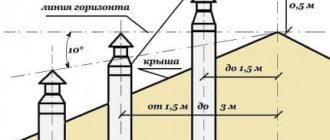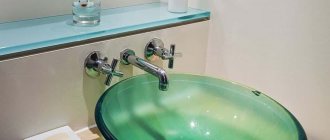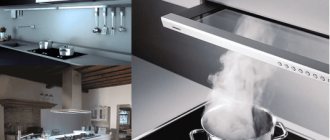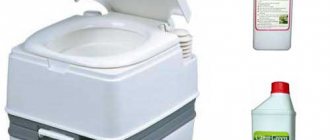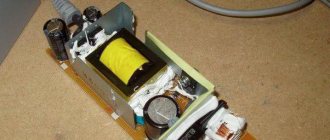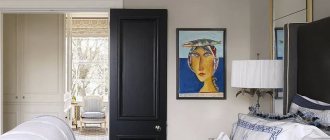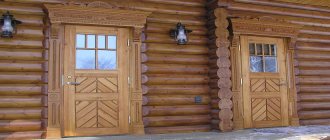The working surface of the kitchen table is most intensively used when preparing dishes. The best kitchen countertops must meet the requirements in many ways. Judging by numerous user reviews, coatings must be durable and reliable. Most often, surfaces are made in the form of monolithic slabs without joints, which reduce the functionality of the product. Plates made from various materials, glossy or matte, acrylic or plastic, fit harmoniously into the interior of the room. Cookers are often equipped with built-in hobs and sinks. Which design is best for a particular kitchen is always decided by the owner of the room.
The ideal countertop - what is it?
No matter how obvious it may be, first of all you need to proceed from your financial capabilities. It is clear that if the budget is unlimited, then there are no problems, but when you need to strictly calculate costs, then budget a considerable amount for the countertop. There are situations everywhere when people choose a kitchen made of solid wood, with expensive fittings, but there is no money for the lid, and they have to buy the cheapest option. Of course, the entire design suffers from this.
It is worth considering the dimensions and style of the room: pompous natural stone is unlikely to be appropriate in a six-meter kitchen, just as laminated chipboard will not fit into a luxurious mansion in a classic style.
Ideal surface:
- resistant to chips and impacts;
- does not absorb dirt and does not stain;
- tolerates high temperatures well;
- not afraid of humidity;
- does not react to acids and other aggressive substances;
- easy to clean;
- being restored;
- beautiful and harmoniously complements the interior;
- affordable.
Unfortunately, there is no material that would 100% meet these conditions.
Marble
Undoubtedly, one of the most aesthetic materials for interior decoration. A marble countertop will give the entire kitchen ensemble a nobility and respectable appearance. Marble does not tolerate significant temperature changes. This is cold material. It is not recommended to place hot dishes as they will leave stains on it. The porosity of this material ensures instant absorption of coloring pigments from coffee or carrot juice spilled on the countertop. A trace of a marker left by a child that cannot be removed from the surface of the marble can ruin your mood for a long time. If marble still captivates you with its beauty, we recommend regularly using special wax-based protective products that retain moisture and protect the product from various contaminants.
Dimensions
It is necessary to take into account the size of the surface and how much it should protrude above the facades.
As a rule, the width of the lid does not exceed 60 cm, while the depth of the cabinets varies between 56–58 cm. It turns out that the protrusion in front is about 3 cm, and in the back 1 cm. This is enough so that when working you do not touch the handles of bedside tables and protect communications carried out behind the furniture wall.
Of course, there are also non-standard solutions. For small kitchens, it is permissible to install narrower furnishings (from 46 cm), and then the lid is selected to match them.
The length of the surface can be different and depends on the dimensions of the set and the design of the room. There are projects in which the tabletop smoothly flows into a window sill or bar counter. So we can’t talk about any fixed values: even in standard apartments these indicators differ.
BORMA HARD TOP OIL
This is a mixture of natural modified oils made in Italy. It is ideal for kitchen worktops and is food contact resistant. The product is environmentally friendly and safe, has passed strict quality control, and therefore does not emit harmful chemical impurities. The special shape ensures resistance to dirt and scratches. Solid oil is transparent, so distortion of the shade of wood is excluded, while adding richness to the color. Complete drying occurs after 12 hours, and maximum hardness after a day.
Material
I am sure that the most difficult thing is to choose the material. There are many options for what countertops are made of, so you have to think seriously.
Laminated chipboard
The most budget variety. This design is based on a chipboard covered with plastic on top. In modern structures, it is applied using postforming technology - when plastic envelops the base and forms a seamless connection.
The plastic on top is CPL or HPL. There is an opinion that the second one is better in terms of characteristics than the first one, but this is not so. In fact, the two names come from the different types of machines used to roll out the plastic. For the top, both are equally suitable.
The advantages of laminated chipboard are as follows:
- this is the cheapest option;
- Can be produced with any pattern and design;
- production does not take much time;
- installation is quite simple, so it’s quite possible to do it on your own without involving specialists;
- it is easy to care for and tolerates washing with chemicals well;
- The top layer is quite durable.
Among the shortcomings it is necessary to note:
- instability against dyes: stubborn stains are not always removed without leaving a trace;
- Water gets into the joints and seams, and the canvas swells and bulges;
- areas that are frequently washed may become lighter and lose their original shade;
- it is impossible to produce a single large-sized canvas;
- short service life - on average about 5 years;
- reacts poorly to prolonged contact with hot things;
- Formaldehyde, which is harmful to health, is used in production.
If the integrity of the coating is compromised and the base appears, then you should know that it releases a toxic component into the air.
Despite the large list of negative features, countertops made from this raw material are very popular in our country, which is explained by their low price. Tips on choosing a top will help you avoid running into a low-quality product.
- Check the documentation for the emission class of the slab indicating the formaldehyde content. It must match E0 or E1.
- It is better to choose moisture-resistant chipboard that can withstand longer contact with water and does not swell. In addition to the marking (P5), you can recognize it by the appearance of the panel itself: it contains green or blue inclusions.
- Carefully treat the seam joints with sealant and ensure that the parts are connected correctly by the craftsmen. This will protect against moisture and significantly increase the service life of the furniture.
- The cheapest products are 26 mm thick, but they are unreliable. Objects with a width of 38 mm are much stronger.
- In addition to the thickness of the plate, it is important to take into account the thickness of the plastic: Russian and Polish products are quite thin - 0.4–0.6 mm, but Austrian and Italian ones are much more wear-resistant - 0.8 mm.
- A good model should have a drip tray, which is located on the back side along the edge of the plastic edge. It looks like a thin plastic groove. Spilled drops are collected in this groove and do not destroy the base.
- It is recommended to choose light shades to avoid noticeable scuffs.
MDF
This base is denser, and paraffin and lignin are used as a binding component, rather than formaldehyde resins. Due to this, consumer qualities are improved and the cost increases. The top of the base is covered with the same plastic. Advantages:
- affordable price - it is higher than for products of the previous type, but less than for others;
- You can order any color and design;
- Since the material is soft, there are wider possibilities for correcting the shape of the kitchen lid.
The disadvantages include:
- most of the negative features coincide with the previous variety, since their top layer is the same: low heat resistance, susceptibility to color abrasion, absorption of dyes;
- The MDF base swells from moisture, but it is much less porous, and this process occurs more slowly, which means the furniture lasts longer.
The expert advice that was voiced for chipboard applies to such samples.
Tree
Stunningly beautiful wooden models are especially popular in Scandinavian interiors and eco-style. Wood has a unique pattern, texture and gives a special warmth, so it is chosen not for practical reasons, but for its “soul.” Although it is not without its advantages:
- environmental friendliness and safety;
- if varnish is applied on top, then the working surface is resistant to moisture;
- Such a product can be sanded several times to renew it.
Operational parameters depend on the breed used in manufacturing. Oak, ash, larch, teak, and walnut have proven themselves positively. Coniferous samples are more affordable in cost, but less wear-resistant.
There are two options for wooden lids.
- Base made of chipboard or MDF covered with veneer.
- Solid wood made of several connected parts.
The weaknesses are the following:
- Temperature changes and humidity negatively affect natural wood: it dries out and sags;
- poor heat resistance and fire hazard due to low fire resistance;
- if water gets into an unprotected joint, the wood will swell, rot and mold;
- absorbs coloring compounds and does not tolerate acids;
- There may be dents from impacts and scratches;
- the countertop requires special care: chemicals are prohibited, with the exception of a weak soap solution, and periodic polishing with oil is required;
- Microbes thrive in microscopic pores.
Another disadvantage of a veneered product is the limited number of restorations (no more than 3), since the top layer is erased. In addition, it may come off or become damaged.
Recommendations for purchase.
- The thicker the slab, the better. The indicator varies from 32 to 42 mm.
- The array class must be A or A/B. This indicator determines the presence of knots.
- Evaluate the raw materials for the countertop personally so that there are no unpleasant surprises later, such as knots and stains.
Acrylic
One of the varieties of artificial stone, which is made from fine mineral chips, color pigments and acrylic resin. This substance is poured into a mold, where it hardens. But you should know that the cast countertop is not entirely made of acrylic, but only the top, under which there is good old chipboard.
This type has a wide range of advantages:
- there are no seams - the surface is monolithic and looks neat. It is also permissible to make a built-in sink from the same material as the coating;
- Manufacturers provide a huge selection of colors and textures;
- there are no pores on the material, which means bacteria do not live and dirt is almost not absorbed;
- the color does not wear off or fade in the sun;
- the top can be sanded, and if chips or dents occur, they are carefully restored, and traces of repair cannot be seen;
- acrylic is warm to the touch.
Of the negative points, the most important are:
- susceptibility to scratches, which most owners in their reviews call the main problem;
- acid damages the topcoat, and dyes leave indelible marks;
- You cannot place hot items on such surfaces;
- installation poses certain difficulties, so it is impossible to do without the help of professionals.
Each company produces acrylic using its own technology, which is why the names differ.
When purchasing, check the thickness of the top layer. It can be from 3 to 19 mm. Moreover, this does not affect the consumer properties: only the number of allowed grinding changes.
Agglomerate
Unlike acrylic, which is essentially plastic, agglomerate is closer to stone. This is explained by its composition: it consists of 90–95% mineral chips: quartz, granite, marble. The rest is solid epoxy resins. It turns out to be a really durable and most practical item:
- it has no pores, so dirt is not absorbed;
- absolutely not afraid of scratches;
- has heat resistance;
- does not change from contact with aggressive components, does not fade or fade;
- absolutely safe and environmentally friendly.
This variety is closest in its properties to “ideal” and takes first place in my personal rating (although many experts and kitchen owners also agree with this assessment). Its only drawback is the price. It often even exceeds the cost of natural stone.
It is easy to distinguish acrylic from agglomerate by touching it: the first is warmer, and the agglomerate is cold, like natural rock.
This cover requires attention during installation, as it is quite heavy. The lower sections of the headset are subject to increased requirements in terms of reliability and often require additional reinforcement of the frame.
If the cladding is damaged (which is difficult to do), then it cannot be restored.
The thickness of the stone should be at least 12, and preferably 20 mm. It is also worth considering what kind of base is used as a substrate.
Stainless steel
Most often found in catering establishments. This is not surprising, because steel products have a number of advantages:
- durability and reliability;
- is not afraid of practically anything: mechanical damage, aggressive chemicals, moisture, coloring components - stainless steel doesn’t care about anything;
- Thanks to its excellent hygienic qualities, microbes do not live on the metal, and rot and mold do not develop.
The problem is that this solution requires caution in the interior. Stainless steel fits well into loft, industrial and high-tech styles. The line between adding a fashionable twist and ending the habitation in a technical room is very thin, and not everyone manages to keep it.
Another weakness of the metal is its susceptibility to scratches, due to which it gradually loses its shine. Although in some cases such a mesh only adds charm, but if you don’t like it, then the coating can be polished.
What no housewife really wants to face is the need to constantly clean and wipe the surface. But if you want a stainless steel table to look decent, then you will have to do this constantly. Fingerprints, water drops, stains - all this is very clearly visible on the metal.
Also, some people do not like the feeling of cold that appears when touched. On hot days, it is, of course, pleasant, but in the winter season the pleasure becomes questionable.
Other significant disadvantages are prices and difficulty in finding a good manufacturer. Due to the low prevalence of proposals for the manufacture of such products, there are also not very many proposals.
Glass
Rarely seen. The unpopularity is explained by its high cost and fragility. And although special tempered glass is used for the lids, it can break if handled carelessly.
Tempered glass, when damaged, breaks into large fragments with blunt edges that are not capable of injuring a person.
Even on such a lining, abrasions gradually form, especially if you rub it with a hard sponge and powder products.
However, otherwise these items are quite good:
- appearance is probably the most impressive of all, since products can be glossy or matte, with photo printing or plain color, complemented by a variety of built-in lighting;
- glass is easy to clean and is not afraid of water and hot water;
- safe from the point of view of the release of toxic elements.
Such samples will not fit into any style. Minimalism, modern or high-tech are ideal for them.
Ceramics
Also a rare guest in our kitchens. The tabletop, like the apron, is made of ceramic tiles. A common technique is when it seems to flow onto a wall made of the same material. The panels can be large or small, like a mosaic.
The weak point of the structures is the seams. They absorb grease, various stains and just dirt and it becomes difficult to wash them. The grout will have to be updated regularly to keep it looking neat.
In addition to this, the laying out process itself causes difficulties - this work is very painstaking and filigree. This countertop is very heavy, and the cabinets must be reinforced to withstand the load.
Among the advantages it is worth noting:
- unusual and attractive design: you can play with the size and layout of the tiles, combine colors, etc.;
- It is allowed to place hot pots and pans on the facing;
- The tile itself does not react to dyes or acids.
Moderate mechanical impact will not cause harm, but if a fragment is damaged, it will be almost impossible to replace an individual piece. Most likely, you will have to disassemble the entire cover.
Marble
Although marble products look good and solid, they cannot boast of outstanding properties:
- the presence of many pores leads to the fact that color pigments are instantly eaten away, and it is impossible to remove them;
- reacts poorly to temperature changes: it can crack, and when hot it turns yellow;
- as sad as it is to admit, chips often form on such a surface;
- special care is required: you need to rub a special protective composition into the rock once every 1–2 months.
There are some recommendations that will help you find a quality item.
- The documentation must contain information about the radioactivity of the background of the stone.
- Kara marble (pictured above) is the most interesting. It is distinguished by its white color and the presence of beautiful veins. But it's expensive. An alternative is quartz agglomerate with a similar pattern. It is sometimes very difficult to recognize “unnatural”, since artificial material accurately conveys the splendor of the material.
- Think in advance about what the tabletop will be installed on, because it is quite heavy.
- You will probably have to deal with connecting several fragments, since there are no solid pieces longer than 2.5 m. Making it beautiful is not the easiest task.
Similar colors and textures are good in almost all styles, but are especially harmonious in light classic interiors and for a white kitchen.
Granite
Like marble, it is a natural rock. But in beauty it is often inferior to its brother, but in quality it wins 100%:
- is not afraid of high temperatures, does not fade or change color;
- resistant to moisture and acids;
- it is easy to care for.
The only weak point in terms of daily use is its sensitivity to strong dyes, so stains must be wiped off immediately.
The heavy design adds hassle to installation. In addition, there is a high probability that you will have to join the pieces, since granite is supplied no more than 2.5 m long.
Separately, I would like to say about the safety of raw materials. Granite often has a high background radiation, so be sure to ask the seller for a quality certificate, which indicates the class of specific activity of natural radionuclides. Only class 1 is suitable for residential buildings.
You can learn more about the characteristics of different materials and see some more interesting options in the video.
Ceramic tile countertops and full-length ceramics
Ceramics is the most wear-resistant material used for the production of countertops:
- heat-resistant and resistant to mechanical stress;
- does not absorb moisture, fats, or coloring pigments;
- resistant to acids and alkalis.
With the advent of large format ceramic slabs, tile countertops have lost their popularity. When using tiles as a covering for a kitchen table, it is not possible to achieve a smooth surface, since it consists of separate segments and seams between them. To avoid the absorption of dirt, periodic high-quality treatment of the seams with special varnishes is necessary.
Full-size ceramics completely solves this problem; the finished product will have a minimal number of seams or no seams at all.
The technology for the production of porcelain stoneware slabs allows us to obtain a material with an absolutely flat surface.
additional characteristics
In addition to material and dimensions, there are other important parameters that affect the appearance and cost of the finished product.
- End Finishing – Standard edge finishing is included in the cost of the tabletop itself. But if you want a curly seal, you will have to fork out more.
- Connection of parts - fragments are combined by using a T-shaped profile made of aluminum alloy or joint-to-joint with or without a euro-cut tabletop. Each option has pros and cons, so you need to decide this issue for yourself “on shore”.
- Type and color of coating – a matte surface is more practical than a glossy one. This applies to any base. The dark color looks impressive, but is difficult to maintain on a daily basis.
- The presence of sharp corners - the fewer sharp protrusions, the more convenient it is to move around the room. This is especially true for a small area.
What are the advantages and disadvantages
You have already decided that a plastic kitchen countertop is right for you. Just keep in mind that a slab that is too thin is not the best option. Consumer reviews also speak about this.
What color it will be is up to you. Even just white, or like stone or wood.
Plastic-coated countertops are a cheap alternative to luxury linens. At the same time, they look no worse. An excellent solution for a budget kitchen.
The main advantages include the following:
- high moisture resistance, which is very important for the kitchen;
- decent resistance to mechanical damage and abrasion over time;
- resistance to food acids and water vapor;
- heat resistance, which in the case of HPL plastic reaches 200 degrees Celsius;
- quite long service life.
But starting only from merits is not entirely correct.
You need to understand in advance what pitfalls you may encounter when choosing this product option.
The disadvantages here are the following:
- The unreliability of imitation
. Visually, manufacturers are trying to make the panel look like wood. But when examining the kitchen, it immediately becomes clear that this is an imitation. If you are accustomed to luxury and want a perfect imitation, then plastic countertops are definitely not your option; - Unsuitable for restoration
. Many swollen countertops can be restored with your own hands. The same stone products are ground and rubbed. If you damage the plastic, it's easier to replace it completely. The only solution is to buy a new countertop; - Penetration of moisture into joints
. Largely because of this, such products are not the best solution for the street. If moisture gets there, the product will soon swell. As it swells, the plastic itself becomes deformed. And here again there is no way to do without replacing the entire countertop.
Yes, these are rather conditional disadvantages. You can get rid of them if you initially choose a good product, and also adhere to all the rules for installation and further operation.
Results
To make it easier to understand how to choose the right countertop, look at this table comparing the main types and their characteristics. We will conduct the assessment, as in school, using a five-point system, where 5 is the best mark.
| Material | Consumer properties | Easy to install | Raw material safety | Price |
| laminated chipboard | 3 | 5 | 2 | 5 |
| MDF | 3 | 5 | 5 | 5 |
| Tree | 3 | 4 | 5 | 4 |
| Acrylic | 4 | 3 | 5 | 3 |
| Agglomerate | 5 | 2 | 5 | 2 |
| Stainless steel | 4 | 4 | 5 | 4 |
| Glass | 4 | 4 | 5 | 3 |
| Ceramics | 3 | 2 | 5 | 3 |
| Marble | 3 | 3 | 5 | 2 |
| Granite | 5 | 2 | 5 | 2 |
Now you just have to decide for yourself which parameters are most important and decide on the price segment.
For myself, I realized that if finances allow, then I will install an agglomerate in my future apartment. In the case of budget repairs, I will choose MDF; after all, it is non-toxic and more stable than chipboard.
What kind of countertop do you have? Would you choose her again, why?
Application
Oil for treating natural wood countertops has the following approximate consumption:
- 1 liter per 30 m2 – if two layers are applied;
- 1 liter per 40 m2 – when the surface is treated in one layer.
Before using the product, stir it for 3-5 minutes. It is applied to the product in an even layer with a small excess. After half an hour, the excess is leveled, and the surface is polished with a pad or soft cloth. This stage involves complete absorption of the oil into the surface of the wood. When two layers are applied, the second should be done only after 16-24 hours. Both application of the product and its drying should be carried out only at a temperature of at least +16 °C.
Glass
Glass countertops are an infrequent choice for practical owners: if the coating is damaged, it will have to be completely dismantled. On the other hand, glass has excellent characteristics:
- heat resistant;
- waterproof;
- large assortment of colors and designs.
Many will be put off by the high price of a glass kitchen countertop, but the beauty is worth it.
Granite
Granite slabs are of igneous origin and are composed of minerals. Natural origin gives the breed excellent performance qualities:
- hardness and strength;
- resistance to physical and mechanical damage;
- low water absorption;
- resistance to high temperatures;
- long service life.
The color range of finished countertops is varied: black, green, gray, brown and other shades. Many people are confused by the association with “cold” from the type of stone. In design, such issues are resolved by combining rock with wood. You should remember the weight of the structure and strengthen the base.
Acrylic
The production technology of acrylic tabletops consists of binding pigments and mineral chips with acrylic resin and allows you to create any shape to realize the design idea. Unlike a natural stone surface, an acrylic slab can be cut, and the joints are connected with glue and polished.
Acrylic is not resistant to scratches, hot surfaces and aggressive liquids, but damaged areas can be restored using sanding paper and GOI paste.
Tips for repairing damage and preventing it
Tabletop repairs are carried out as carefully as possible so that the restoration site does not stand out from the rest of the surface.
A few tips will help with this:
- When choosing how to cover a chipboard countertop, pay attention to the rest of the kitchen design. If the facades are glossy, choose a glossy varnish coating. For calmer kitchens, matte varnish is more suitable.
- If you couldn’t find a coloring composition that perfectly matches the color of the countertop, then a tint varnish will help hide the differences between the problem area and the rest of the surface.
- To prevent delamination of the work surface, immediately after purchase, cover its ends with silicone compound and plastic strips. Additionally, the entire surface is treated with varnish.
Concrete
Quite a popular material from European branded kitchen furniture manufacturers. But not only professional studios take on the production of such countertops - many craftsmen with certain skills can easily create newfangled work surfaces.
The best part is that you can do anything with concrete: add color at the pouring stage, paint, sand, pour textured models, and even dilute cold cement stone with colored glass and other decorative trinkets.
It is impossible not to note its high performance characteristics, which are expressed in excellent resistance to high temperatures, constant exposure to moisture, shock, scratches and caustic liquids. However, concrete can easily absorb dyes, so treatment with protective solutions is mandatory. Another difficulty is the installation of a massive countertop, which requires certain professional skills.
Knowing the characteristics of each material, you can easily choose the one that is best suited for creating a work surface. The main thing is to objectively assess your capabilities, priorities and attitude towards the ritual of cooking.
Introduction
We are all familiar with kitchens and none of them are complete without a countertop. It is one of the components of kitchen furniture and kitchen interior. Very often, designers develop different projects: these could be different kitchen countertops made from a single piece of fabric; tabletop serving as a bar counter, etc.
Choosing a kitchen countertop is not only a choice of the special materials from which it is created, but also the functional features that create a unified style in the kitchen and elegance; this is art.
Kitchen countertops made of wood and natural stone were among the first to appear. The varieties used were oak, pine and birch. They were replaced by laminated countertops and countertops made of artificial stone, countertops made of natural granite, and composite.
Impenetrable steel
This is a fairly rare material for use at home; it is usually used in professional kitchens. And for good reason – a steel countertop is characterized by increased wear resistance and ease of cleaning. Its production is quite labor-intensive: laminated chipboard sheets are sheathed with thin layers of stainless steel and the edges are processed. You won’t find it in mass production, but for individual assembly, please.
This surface is available in both mirror and matte versions; the second, by the way, is more practical. Scratches and dirt are not so visible on it. You can also find embossed material. But the mirror countertop will have to be polished often. By the way, although steel is a durable material, it still cannot withstand sharp targeted impacts.
Features of table decoration
When the paint is completely dry and hardened, it's time to start decorating. There are several techniques you can use at home. They are good because they do not require expensive investments and are easy to create at home. This is a great option for updating a child's room.
- Decoupage. For this technique you will need napkins with a beautiful pattern, brushes and PVA glue. Select the topmost layer of paper with a decorative element, attach it to the tabletop and apply glue on top with a brush. Make sure that the napkin does not tear, form air bubbles, or move from its original position. After the glue has completely dried, the decorative element is coated with transparent varnish.
- Tulle. Find a piece of tulle with a beautiful pattern. Wet the material, apply it to the table surface and fix it. Using spray paint or a brush, paint the tulle fabric evenly. After drying, remove the improvised stencil. It will look especially impressive if you use contrasting colors of the paint composition.
- Artificial aging of wood looks stylish in a home interior. To do this, sand the surface of the table with sandpaper and wipe certain areas with ammonia. When they darken, go through sandpaper again and varnish.
- Patination. This method produces beautiful, dark, vintage stains on a wooden surface. Apply the patina using stain or other suitable means, wait until it dries and remove unnecessary layers with a foam sponge.
Quartz agglomerate
A separate transitional type from artificial stone to natural stone is quartz agglomerate. It is not a single piece of stone as is the case with marble or travertine. Quartz is crushed into tiny particles, then fixing resins are added.
Then they are pressed under the influence of a press and high temperatures. This technology produced surprisingly strong material. It is a monolithic surface with no pores or tiny depressions.
Quartz can withstand temperatures of 260°C and above. It can be used to cut food without using a cutting board. The agglomerate cannot be damaged by acids and other chemicals.
The ridge and wall edge of the tabletop, like artificial stone, can be made shaped, stepped, or rounded. This cannot be done with natural stones: marble, granite. The only disadvantage of quartz is the inability to completely sand the seam. It will be noticeable in certain lighting.
A natural stone
The main advantage of natural stone is its environmental friendliness. In addition, the uniqueness of the pattern of each tabletop is guaranteed. Nature does not repeat itself. The sophistication of marble, travertine, granite or opal is incomparable to other materials.
Myths about natural stone
Let's dispel the myth about the exorbitant cost of natural stone. Depending on the deposit, its price may vary. But the average value does not exceed the price of artificial stone. Naturally, Brazilian marble will be more expensive than Ural or Chinese. Another myth is that Chinese stone is no different from stone from other countries. Nature makes it, and it works the same everywhere. Pattern and strength depend on the deposit, not the country of origin.
Peculiarities
The tabletop also does not consist entirely of stone, otherwise it would be too heavy to lift. Therefore, inside there is a layer of moisture-resistant chipboard. And the layer of stone is usually 10, 20 or 30 mm at the customer’s request. The stone is usually transported in standard pieces of 3 by 3 m. When joining a tabletop of more than 3 meters, there will definitely be a joint. It can be sanded, but the pattern cannot be matched. A break in the pattern will be visible at the junction.
Preparing the surface for painting
The countertop that you plan to paint must be clean, intact and dry. Fill all chips and cracks with putty, after drying, clean these places, or better yet, the entire surface as a whole. This will not only get rid of differences and unevenness, but also give the surface roughness, which will improve paint adhesion.
If the tabletop is very old, with multiple damages, and you doubt that you will be able to repair them perfectly, it is better to make an overlay - for example, from an MDF sheet or moisture-resistant plywood. By screwing such an overlay to the surface, you will get a smooth surface ready for painting. Only the edges need to be sealed with putty.
To improve paint adhesion, use a primer that matches the material of the countertop (primer for wood, primer for mineral surfaces, etc.). Or use a universal primer. Allow the primed countertop to dry before you begin painting. Not only the top layer, but the entire countertop as a whole should be dry. Some materials (wood, unglazed ceramics) absorb the primer especially actively, so it is better to continue the work the next day.


